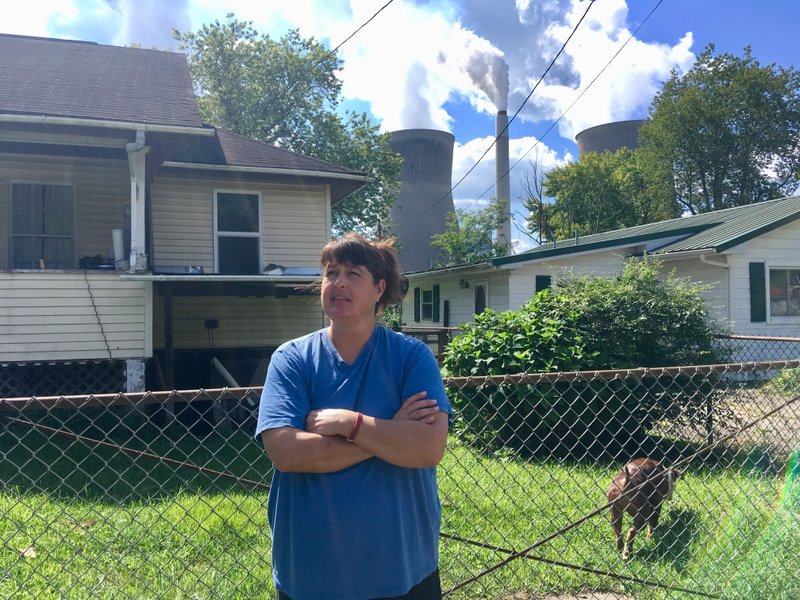GRANT TOWN, W.Va. -- When President Donald Trump announced his plan rolling back President Barack Obama-era pollution controls on coal-fired power plants, he did it in West Virginia.
Trump left one thing out of his remarks, though: northern West Virginia coal country will be ground zero for increased deaths and illnesses from the rollback on regulation of harmful emissions from the nation's coal power plants.
An analysis done by his own Environmental Protection Agency concludes that the plan would lead to a greater number of West Virginians dying prematurely, and suffering health problems that they otherwise would not have, than elsewhere in the country, when compared with the health impacts of the Obama plan.
Steve Knotts, 62, a coal miner for 35 years, wasn't fazed when he heard that warning, a couple of days after Trump's West Virginia rally. He says the last thing people in coal country want is the government slapping down more controls on coal -- and the air in the remote West Virginia mountains seems fine to him.
"People here have had it with other people telling us what we need. We know what we need. We need a job," Knotts said at lunch hour at a Circle K in a tiny town between two coal mines, 9 miles down the road from a coal power plant, the Grant Town plant.
The sky around Grant Town is bright blue. The mountains are a dazzling green. Paw Paw Creek gurgles past the town.
Clean-air controls since the 1980s largely turned off the columns of black soot that used to rise from coal smokestacks. The regulations slashed the national death rates from coal-fired power plants substantially.
These days pollutants rise from smoke stacks as gases, before solidifying into fine, invisible particles -- small enough to pass through lungs and into bloodstreams.
An EPA analysis says those pollutants would increase under Trump's plan, when compared to what would happen under the Obama plan. And that, it says, would lead to thousands more heart attacks, asthma problems and other illnesses that would not have occurred.
Nationally, the EPA says, 350 to 1,500 more people would die each year under Trump's plan. But it's the northern two-thirds of West Virginia and the neighboring part of Pennsylvania that would be hit hardest by far, according to Trump's EPA.
Trump's rollback would kill an extra 1.4 to 2.4 people a year for every 100,000 people in those hardest-hit areas, compared to under the Obama plan, according to the EPA analysis. For West Virginia's 1.8 million people, that would be equal to at least a couple dozen additional deaths a year.
In Washington, EPA spokesman Michael Abboud said Trump's plan still would result in "dramatic reductions" in emissions, deaths and illness compared to the status quo, instead of to the Obama plan.
Obama's Clean Power Plan targeted climate-changing carbon dioxide, but because coal is the largest source of carbon dioxide from fossil fuels, the Obama plan would have curbed other harmful emissions from the coal-fired power plants as well.
The Obama plan targeted climate-changing emissions from power plants, especially coal. It would have increased federal regulation of emissions from the nation's electrical grid and broadly promoted natural gas, solar power and other cleaner energy.
Trump's plan would cede much of the federal oversight of existing coal-fired power plants and drop official promotion of cleaner energy. Individual states largely would decide how much to regulate coal power plants in their borders.
The plan is open for public review, ahead of any final White House decision.
Abboud and spokesman Ashley Bourke of the National Mining Association, which supports Trump's proposed regulatory rollback on coal emissions, said other federal programs already regulate harmful emissions from coal power plants. Bourke also argued that the health studies the EPA used in its death projections date as far back as the 1970s, when coal plants burned dirtier.
In response, Conrad Schneider of the environmental nonprofit Clean Air Task Force said the EPA's mortality estimates had taken into account existing regulation of plant emissions.
Additionally, health studies used by the EPA looked at specific levels of exposure to pollutants and their impact on human health, so remain constant over time, said Schneider, whose group analyzes the EPA projections.
And when it comes to coal power plants and harm, Schneider said, "when you're at Grant Town, you're at Ground Zero."
Parked near the Grant Town post office, where another resident was rolling down the quiet main street on a tractor, James Perkins listened to word of the EPA's health warnings. He cast a look into the rear-view mirror into the backseat of his pickup at his 3-year-old grandson.
"They need to make that safe," said Perkins, a health care worker who had opted not to follow his father into the coal mines. "People got little kids."
Information for this article was contributed by Seth Borenstein of The Associated Press.
A Section on 09/04/2018
